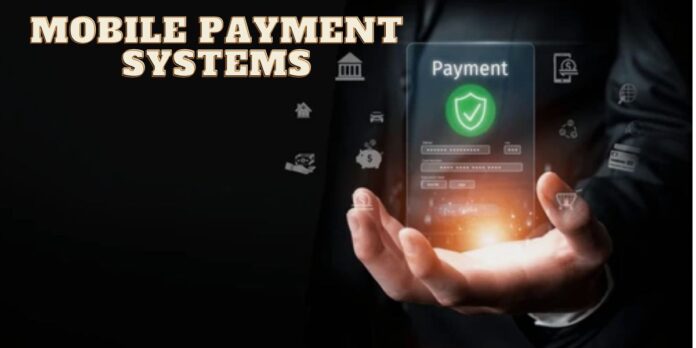Mobile payment systems have undergone a dramatic transformation over the past decade. From their humble beginnings as simple SMS-based transactions to the sophisticated digital wallets and contactless. payments of today, these systems have evolved to become a cornerstone of modern commerce. As technology continues to advance, the question arises: What’s next for mobile payment systems? This article explores the evolution of mobile payment systems and delves into emerging trends that could shape their future.
The Early Days of Mobile Payments
The concept of mobile payments dates back to the early 2000s, when SMS-based transactions were introduced. These transactions allowed users to make small payments through text messaging, primarily for services like ringtone downloads and charity donations. Although limited in scope, these early systems laid the groundwork for more complex mobile payment technologies.
The Rise of Mobile Wallets
The introduction of smartphones in the late 2000s marked a significant shift in mobile payments. With the advent of mobile wallets, consumers could store their payment information securely on their devices and make transactions using apps. Apple Pay, Google Wallet, and Samsung Pay are notable examples of mobile wallets that emerged during this period.
Mobile wallets revolutionized the payment experience by enabling users to make payments through Near Field Communication (NFC) technology. This contactless method of payment allowed for faster, more secure transactions compared to traditional credit and debit card swipes. The convenience of mobile wallets quickly gained popularity, leading to widespread adoption.
The Growth of Contactless Payments
As mobile wallets became more prevalent, the demand for contactless payments grew. Contactless payment technology uses radio frequency identification (RFID) or NFC to facilitate transactions without the need for physical contact between the payment device and the point-of-sale terminal. This technology proved particularly useful during the COVID-19 pandemic, as it minimized the need for physical contact and reduced the risk of virus transmission.
The rise of contactless payments also prompted retailers to upgrade their point-of-sale systems to support this technology. As a result, consumers enjoyed a faster and more hygienic payment experience, further driving the adoption of mobile payments.
The Integration of Cryptocurrency
In recent years, cryptocurrency has emerged as a new frontier in mobile payments. Digital currencies like Bitcoin and Ethereum have gained traction as alternatives to traditional payment methods. Mobile payment apps and platforms have begun integrating cryptocurrency features, allowing users to store, manage, and spend their digital assets through their mobile devices.
Cryptocurrency integration presents both opportunities and challenges for mobile payment systems. On the one hand, it offers users greater flexibility and access to a new form of payment. On the other hand, it raises questions about security, regulatory compliance, and the volatility of digital currencies.
The Role of Biometric Authentication
Security has always been a critical concern in mobile payments, and advancements in biometric authentication have played a significant role in addressing these concerns. Fingerprint scanning, facial recognition, and iris scanning are examples of biometric technologies. That have been integrated into mobile payment systems to enhance security and convenience.
Biometric authentication provides a more secure and user-friendly way to verify transactions compared to traditional methods like PINs and passwords. As biometric technology continues to evolve, it is likely to become an even more integral part of mobile payment systems, offering users a seamless and secure payment experience.
The Future of Mobile Payments: What’s Next?
As we look to the future of mobile payment systems, several key trends and innovations are expected to shape their evolution.
- 5G Technology: The rollout of 5G networks is expected to have a profound impact on mobile payments. With faster data speeds and lower latency, 5G technology will enable more seamless and instantaneous transactions. This advancement could lead to the development of new payment methods and applications that leverage the increased connectivity and speed offered by 5G.
- Enhanced Security Measures: As mobile payments continue to grow, so too does the need for robust security measures. Future developments in encryption, multi-factor authentication, and biometric verification are expected to further enhance the security of mobile payment systems. Additionally, the use of blockchain technology could offer new solutions for secure and transparent transactions.
- Integration with IoT Devices: The Internet of Things (IoT) is another area where mobile payments are expected to make significant strides. Integration with IoT devices, such as smart home appliances and wearables, could enable more convenient and automated payment experiences. For example, users could make payments through their smart refrigerators or fitness trackers, further streamlining the payment process.
- Global Expansion: Mobile payment systems are poised for continued global expansion. As more regions and countries adopt mobile payment technologies, there will be increased opportunities for cross-border transactions and international commerce. This expansion will require mobile payment systems to address various regulatory and currency challenges, ensuring a seamless experience for users worldwide.
Conclusion
The evolution of mobile payment systems has been marked by significant advancements, from early SMS-based transactions to sophisticated mobile wallets and contactless payments. As technology continues to progress, the future of mobile payments promises to be even more dynamic and innovative. With the integration of AI, 5G, enhanced security measures, IoT devices, and global expansion, mobile payment systems are set to transform the way we conduct transactions and interact with digital commerce. Embracing these developments will be key to staying at the forefront of the ever-evolving world of mobile payments.




